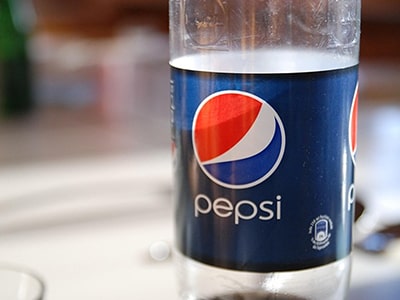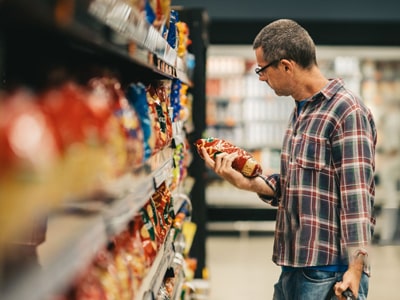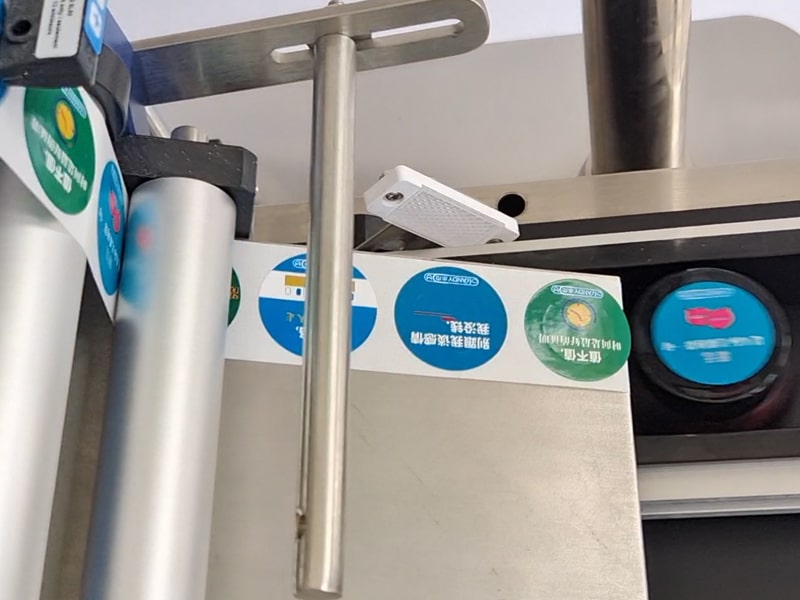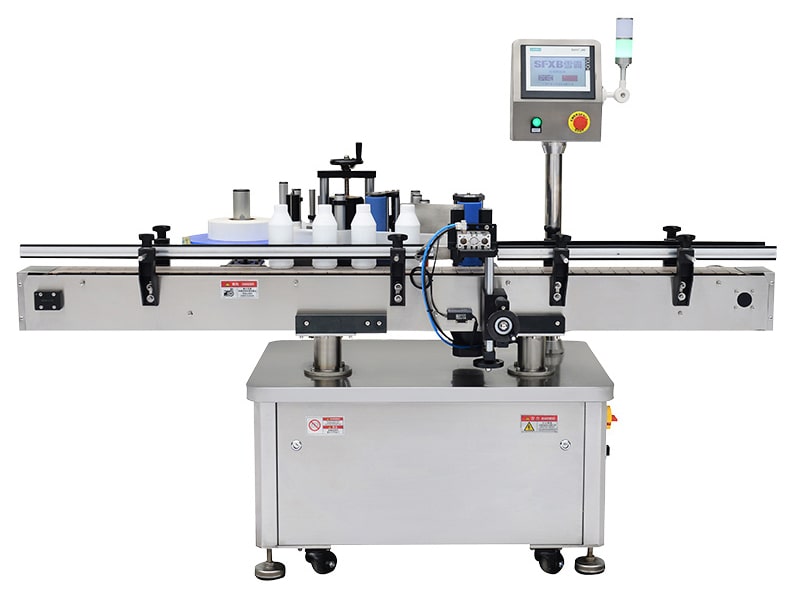In the dynamic world of packaging and filling, the unassuming label plays a crucial role. More than just a pretty sticker, it’s a vital source of information, branding, and regulatory compliance. For manufacturers of packaging and filling machinery, like SFXB, understanding the nuances of labeling technology is paramount to providing clients with optimal solutions. This comprehensive guide will delve into the diverse landscape of labeling machines and methods, exploring the different types available and their suitability for various applications. We’ll not only outline the technical aspects but also touch upon the evolving industry landscape and the considerations manufacturers and end-users must keep in mind.
Understanding the Importance of Effective Labeling
Before diving into the specifics, it’s crucial to understand why effective labeling is so important. A well-designed and accurately applied label contributes to:
● Brand Recognition: Labels are a key component of brand identity. Consistent design and high-quality printing enhance brand recall and build customer loyalty.

● Product Information: Labels provide essential information such as ingredients, nutritional facts, usage instructions, and safety warnings.

● Regulatory Compliance: Many industries, including food, pharmaceuticals, and chemicals, require specific information to be displayed on labels to meet regulatory standards. Non-compliance can lead to hefty fines and product recalls.

● Traceability and Tracking: Labels with barcodes or QR codes enable efficient tracking of products throughout the supply chain, improving inventory management and facilitating recall processes if necessary.
![]()
● Aesthetics and Shelf Appeal: Attractive labeling can significantly influence purchasing decisions, helping products stand out on crowded shelves.

What is a Labeling Machine?
A labeling machine is an automated or semi-automated device designed to apply labels to a wide range of products. These products can include bottles, jars, cans, boxes, containers, and virtually any item requiring identification, branding, or regulatory information. Labeling machines eliminate the inconsistencies and inefficiencies associated with manual labeling, ensuring accurate placement, consistent adhesion, and high-speed application. In essence, they are the backbone of product identification and branding in industries spanning food and beverage, pharmaceuticals, cosmetics, and beyond.
The primary function of a labeling machine is to precisely dispense a label from a roll or stack and affix it securely to the target product. The complexity of this process can vary greatly depending on the type of machine, the shape and size of the product, and the desired labeling method. However, all labeling machines share the common goal of improving production speed, reducing labor costs, and enhancing the overall appearance of the finished product.

How a Labeling Machine Works
The operational mechanism of a labeling machine can be broken down into several key stages:
1.Label Roll Loading and Management: The process begins with loading the label roll onto the machine’s unwinding system. This system is designed to maintain consistent tension on the label roll, preventing tearing or jamming. Sensors are often incorporated to monitor the label roll’s remaining quantity and alert operators when a replacement is needed.
2.Label Web Guidance: As the label web unwinds, it passes through a series of rollers and guides. These components ensure that the label web maintains a precise path, preventing misalignment and ensuring accurate dispensing.
3.Label Peeling and Dispensing: This is the heart of the labeling process. A peeling plate or edge separates the label from its backing paper. The label is then presented to the product using a variety of methods, such as:
Blow-on: A jet of air is used to propel the label onto the product surface. This method is ideal for delicate or irregularly shaped products.
Tamp-blow: A tamp pad presses the label against the product surface, followed by a burst of air to secure the adhesion. This method provides excellent accuracy and control.
Wipe-on: The label is wiped onto the product surface as it passes by a dispensing mechanism. This is a common and versatile method suitable for various applications.
4.Product Transport and Positioning: The product being labeled is conveyed through the machine, often using a conveyor belt, rotary platform, or specialized handling system. Precise positioning of the product is critical for accurate label placement. Sensors and encoders are used to track the product’s position and trigger the label dispensing mechanism at the optimal moment.
5.Label Application and Smoothing: Once the label is applied to the product, a smoothing device, such as a brush, roller, or pad, ensures that the label is firmly adhered to the surface, eliminating air bubbles and wrinkles.
6.Waste Backing Paper Rewinding: The used backing paper from the label roll is rewound onto a take-up spool, keeping the work area clean and organized.
7.Control System and Automation: Modern labeling machines are equipped with sophisticated control systems that manage the entire labeling process. These systems allow operators to adjust parameters such as labeling speed, label placement, and tension, ensuring optimal performance for different product types and label materials. Programmable Logic Controllers (PLCs) and Human-Machine Interfaces (HMIs) are commonly used to provide intuitive control and real-time monitoring of the labeling process.
A Deep Dive into Labeling Machine Types
The market offers a diverse range of labeling machines, each designed for specific applications and production volumes. Here’s a breakdown of the most common types:
1. Manual Labeling Machines:
Description: These machines are the most basic and require manual operation. The operator feeds the label and applies it to the product.
Pros: Low initial cost, simple to operate, suitable for very small production runs or infrequent labeling needs.
Cons: Low throughput, labor-intensive, prone to inconsistencies in label placement and application quality.
Applications: Small businesses, craft industries, pilot production runs, laboratory settings.
2. Semi-Automatic Labeling Machines:
Description: These machines automate certain aspects of the labeling process, typically dispensing the label while the operator positions the product.
Pros: Higher throughput than manual machines, improved label accuracy, less labor-intensive than manual operations.
Cons: Still requires operator intervention, production speed is limited by operator skill.
Applications: Small to medium-sized businesses, companies with moderate production volumes, businesses transitioning from manual to fully automated labeling.
3. Automatic Labeling Machines:
Description: Fully automated systems that dispense, apply, and sometimes even verify the application of labels without human intervention. These machines are integrated into production lines for high-speed, continuous operation.
Pros: High throughput, consistent label placement, reduced labor costs, ability to handle a wide range of product sizes and shapes, integration with existing packaging lines.
Cons: Higher initial investment, requires skilled technicians for maintenance and troubleshooting.
Applications: Large-scale manufacturing, high-volume production lines, industries requiring stringent accuracy and consistency.
Within the category of automatic labeling machines, several sub-types exist, each optimized for specific product formats and labeling needs:
● Wrap-Around Labeling Machines: Designed for cylindrical products like bottles and cans. The product rotates as the label is applied, ensuring a smooth, complete wrap. This is a common solution in the beverage, food, and pharmaceutical industries. SFXB likely offers robust solutions within this category given their expertise in filling and packaging.
 |
| SF-3040 Automatic round bottle positioning and labeling machine |
● Top and Bottom Labeling Machines: Apply labels to the top and/or bottom surfaces of products, often used for cartons, boxes, and flat packages. These are essential for displaying information like barcodes, pricing, or promotional messaging.
● Front and Back Labeling Machines: Designed to apply labels to the front and back panels of products, typically used for rectangular or square-shaped containers like detergents or cosmetics. Precisely aligning these labels is crucial for visual appeal and regulatory compliance.
● Sleeve Labeling Machines: Apply a heat-shrinkable sleeve label that conforms to the shape of the product. Sleeve labeling provides 360-degree coverage, offering ample space for branding and product information. This technology is popular in the beverage, food, and personal care industries.
● Print and Apply Labeling Machines: Integrate printing and labeling functions. These machines print variable data, such as batch codes, serial numbers, or expiration dates, directly onto the label just before application. This is crucial for traceability and regulatory compliance in many sectors.
Exploring Different Labeling Methods
Beyond the type of machine, the *method* of label application also plays a crucial role in achieving optimal results. Here are some common labeling methods:
● Pressure-Sensitive Labeling (PSL): The most widely used method. PSL labels have an adhesive backing and are dispensed from a roll. They are simple to apply, versatile, and suitable for a wide range of materials and surfaces.
● Hot Melt Labeling: Uses a hot melt adhesive to bond the label to the product. This method provides a strong and durable bond, making it suitable for challenging environments and demanding applications.
● Wet Glue Labeling: Employs a wet adhesive, typically applied to the label or the product surface. This method is often used for paper labels on glass bottles. While offering a cost-effective solution, it requires more complex machinery and cleaning procedures.
● In-Mold Labeling (IML): The label is placed inside the mold during the manufacturing process of the container. As the plastic cools and solidifies, the label becomes permanently integrated into the product. IML offers excellent durability, resistance to moisture and chemicals, and allows for complex designs and shapes.
● Shrink Sleeve Labeling: As mentioned previously, this method involves applying a pre-printed sleeve around the product and then passing it through a heat tunnel. The heat shrinks the sleeve, conforming it tightly to the product’s shape.
Factors to Consider When Choosing a Labeling Machine and Method
Selecting the right labeling solution requires careful consideration of several factors:
● Product Shape and Size: The shape and size of the product will dictate the type of labeling machine and method that can be used. Cylindrical products require wrap-around labeling, while flat surfaces are suited for top and bottom labeling.
● Label Material: The label material must be compatible with the product surface and the application method. Consider factors like moisture resistance, temperature resistance, and adhesive strength.
● Production Volume: Production volume will determine the level of automation required. Manual and semi-automatic machines are suitable for small volumes, while fully automated systems are necessary for high-speed production lines.
● Labeling Accuracy: The required level of accuracy will influence the choice of machine and application method. Automatic labeling machines offer the highest levels of accuracy and consistency.
● Budget: The budget available will impact the type of machine and features that can be acquired. Consider the total cost of ownership, including initial investment, maintenance, and operating costs.
● Future Growth: It’s important to consider future growth plans when selecting a labeling solution. Choose a system that can be scaled up to meet increasing production demands.
● Integration with Existing Systems: Ensure the labeling machine can be seamlessly integrated with existing packaging lines and control systems.
The Future of Labeling Technology
The field of labeling is constantly evolving, driven by advancements in materials, printing technologies, and automation. Some key trends include:
● Smart Labels: Labels with integrated sensors or RFID chips that can track temperature, humidity, or location. These labels are used for supply chain management, product authentication, and consumer engagement.
● Sustainable Labeling Materials: Growing demand for environmentally friendly labeling materials, such as recycled paper, biodegradable films, and bio-based adhesives.
● Digital Printing: Increasing adoption of digital printing technologies that enable on-demand printing of variable data and personalized labels.
● Enhanced Automation: Greater integration of robotics and artificial intelligence to improve the speed, accuracy, and flexibility of labeling operations.
SFXB: Your Partner in Labeling Solutions
At SFXB, we understand the intricacies of the packaging and labeling industry. We offer a wide range of high-quality labeling machines to meet the diverse needs of our customers. Our machines are designed for durability, reliability, and ease of use, ensuring optimal performance and minimal downtime. We are committed to providing exceptional customer service and technical support, helping you to find the perfect labeling solution for your specific requirements. Contact us today to discuss your needs and learn more about how SFXB can help you optimize your labeling process.
Conclusion
Choosing the right labeling machine and method is a critical decision for manufacturers. By carefully considering the factors outlined in this guide, companies can select a solution that meets their specific needs, improves operational efficiency, and enhances brand image. Companies like SFXB (https://www.xuebapack.com/), with their expertise in packaging and filling machinery, are well-positioned to provide clients with tailored solutions that address their unique labeling challenges. Investing in the right labeling technology is an investment in the future of your product and your brand.
| References: | |
| 1. | “Front-of-Pack Labelling Schemes: A Review of Evidence on Consumer Responses and Policy Implications”——A. Bollinger et al. Retrieved from:ScienceDirect |
| 2. | “The Impact of Health Claims on Consumer Perception: A Cross-Cultural Comparison”——P. Chandon et al. Retrieved from:Journal of the Academy of Marketing Science (2023) |
| 3. | “Global Labeling Technology Market 2025-2030: Smart Labels and AI Integration”——McKinsey & Company Retrieved from:McKinsey Insight |






Comments